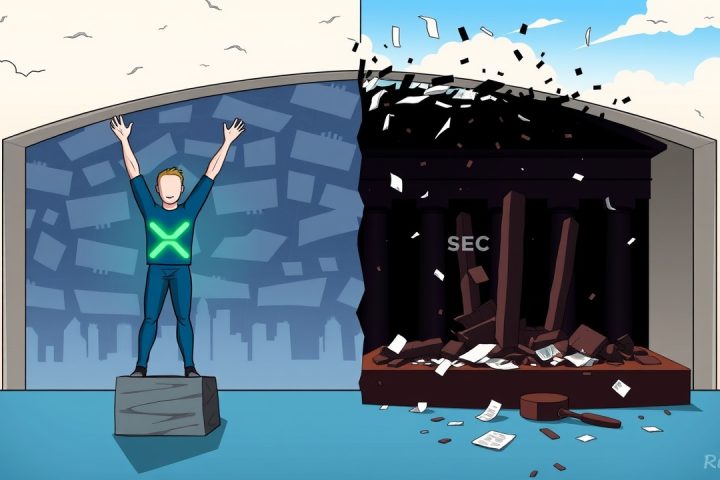Introduction
As the year 2025 begins, the established consensus methods that underlie Bitcoin and Ethereum—proof-of-work (PoW) and proof-of-stake (PoS)—are facing scrutiny amid security breaches and budgetary concerns linked to halving events. Competing systems like Stellar’s trust-centric Proof-of-Agreement (PoA) and Quai Network’s innovative Proof-of-Entropy-Minima (PoEM) present themselves as solutions to these emerging vulnerabilities.
Understanding Consensus Mechanisms
Ryan Berckmans, a researcher within the cryptocurrency sphere and a long-standing member of the Ethereum community, shared insights about PoW, which was originally introduced by Bitcoin’s creator Satoshi Nakamoto. He pointed out that PoW addresses the dilemma of achieving consensus among a decentralized network of computers and facilitates the process of Bitcoin mining. Berckmans described PoW as a pivotal development because it resolved the Byzantine Generals problem, laying the groundwork for enhanced economic systems that can promote global freedom and prosperity.
In contrast, Berckmans emphasized that PoS provides enhanced security measures for Layer-1 (L1) blockchains responsible for securing various assets. He remarked that PoS could theoretically protect an application layer valued at $100 trillion with a native token worth $1 trillion, a capability that PoW does not possess. However, he also acknowledged that PoW’s straightforward design minimizes risk and fosters trust through a mining process that doesn’t necessitate the locking of funds, unlike PoS, which carries the risk of compromised validator private keys leading to potential losses.
Limitations of PoW and PoS
Both PoW and PoS face significant challenges. In PoS systems, validators are economically incentivized to behave honestly, as they stake tokens to earn rewards and face penalties for misconduct. This model can be susceptible to exploitation, as demonstrated in an incident in 2023 when attackers paid a minimal amount to become Ethereum block producers and executed a successful exploit against the MEV-Boost relay network, netting around $25 million in stablecoins.
Berckmans pointed out the intricacies tied to PoS, noting Ethereum’s use of multiple production clients adds complexity and increases the risk of potential chain splits if disagreements about the true state of the blockchain occur. Consequently, the Ethereum Foundation has placed protocol simplification among its strategic objectives moving forward.
Conversely, Bitcoin is grappling with the implications of its diminishing security budget due to its halving cycle, which reduces miner rewards every four years. Berckmans warned that by 2032, Bitcoin could be at risk from catastrophic 51% attacks unless solutions like permanent tail inflation are integrated, albeit that would breach the 21 million cap on BTC supply.
Alternative Consensus Models
In response to these hurdles, different blockchain networks have devised their consensus mechanisms. Stellar’s PoA, as explained by Garand Tyson, a senior software engineer at the Stellar Development Foundation, is markedly different from both PoW and PoS. It relies on social trust rather than computational power or token possession. For a new validator to join, they must be vouched for by an existing member, ensuring that trust is a crucial factor in network governance. This setup fosters transparency as the trusted validator pool forms a quorum set, crucial for regulatory compliance and auditing processes.
Tyson noted that malicious entities cannot simply join by staking a large number of tokens, thus mitigating attacks similar to the one that hit Ethereum. Security in PoA is further enhanced through state finality, which requires a consensus among numerous trusted institutions.
Quai Network introduced its own consensus mechanism, PoEM, which builds upon the foundations of PoW by employing miners’ computational hashes to ensure the randomness of blocks proposed. Co-founder Alan Orwick remarked that this approach guarantees swift finality and enables the network to handle a throughput of over 50,000 transactions per second without straining fees beyond $0.01.
Similarly, PWR Chain utilizes a consensus scheme known as Delegated Proof-of-Power (DPOP), which is based on the Tendermint protocol but incorporates features for quantum security and rapid block creation. Edy Haddad, the CTO of PWR Chain, mentioned that DPOP allows every validator equal opportunities in block creation to prevent centralization typical of classic PoS systems. Instant finality, a key feature of DPOP, ensures irreversible transaction confirmations upon block approval, addressing the sluggishness and high costs often associated with PoW and PoS systems.
Trust and Participation Challenges
Despite the potential of these alternative mechanisms, they are not without their issues. Tyson raised concerns about the trust model in PoA, particularly regarding the risk of centralization should too few validators gain prominence. Stellar’s design encourages validator diversity to mitigate these risks.
On the other hand, PoEM may prove complex for newcomers, with Orwick emphasizing the need for user-friendly applications to facilitate broader participation in the network.
The ongoing evolution of consensus mechanisms signifies a crucial phase for blockchain technology as it seeks to balance security, decentralization, and efficiency amidst mounting challenges.

















